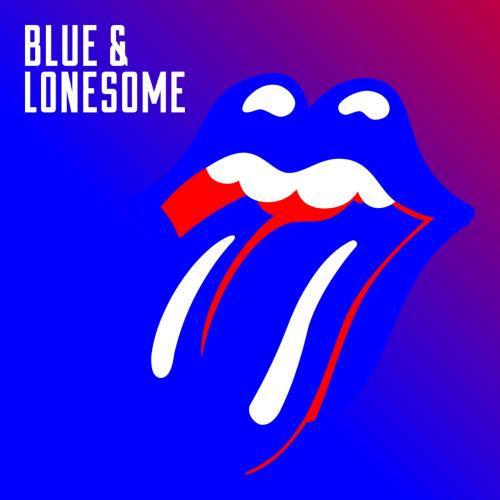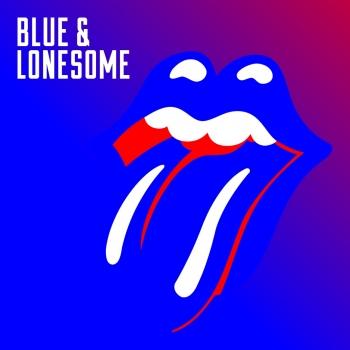
Blue & Lonesome The Rolling Stones
Album info
Album-Release:
2016
HRA-Release:
02.12.2016
Album including Album cover
I`m sorry!
Dear HIGHRESAUDIO Visitor,
due to territorial constraints and also different releases dates in each country you currently can`t purchase this album. We are updating our release dates twice a week. So, please feel free to check from time-to-time, if the album is available for your country.
We suggest, that you bookmark the album and use our Short List function.
Thank you for your understanding and patience.
Yours sincerely, HIGHRESAUDIO
- 1 Just Your Fool 02:16
- 2 Commit A Crime 03:38
- 3 Blue And Lonesome 03:07
- 4 All Of Your Love 04:47
- 5 I Gotta Go 03:26
- 6 Everybody Knows About My Good Thing 04:31
- 7 Ride 'Em On Down 02:49
- 8 Hate To See You Go 03:21
- 9 Hoo Doo Blues 02:37
- 10 Little Rain 03:32
- 11 Just Like I Treat You 03:25
- 12 I Can't Quit You Baby 05:13
Info for Blue & Lonesome
„Blue & Lonesome“ is the new covers album by The Rolling Stones—their 23rd British and 25th American studio album - their first studio album in over a decade. Recorded in just three days in London, England, ‘Blue & Lonesome’ takes the band back to their roots and the passion for blues music which has always been at the heart and soul of The Rolling Stones.
‘Blue & Lonesome’ is available in various formats and will be released on December 2nd by Polydor Records. It was produced by Don Was and The Glimmer Twins.
The album was recorded over the course of just three days in December last year at British Grove Studios in West London, just a stone’s throw from Richmond and Eel Pie Island where the Stones started out as a young blues band playing pubs and clubs.
Their approach to the album was that it should be spontaneous and played live in the studio without overdubs. The band - Mick Jagger (vocals & harp), Keith Richards (guitar), Charlie Watts (drums), and Ronnie Wood (guitar) were joined by their long time touring sidemen Darryl Jones (bass), Chuck Leavell (keyboards) and Matt Clifford (keyboards) and, for two of the twelve tracks, by old friend Eric Clapton, who happened to be in the next studio making his own album.
‘Blue & Lonesome’ sees the Rolling Stones tipping their hats to their early days as a blues band when they played the music of Jimmy Reed, Willie Dixon, Eddie Taylor, Little Walter and Howlin’ Wolf - artists whose songs are featured on this album.
“This album is manifest testament to the purity of their love for making music, and the blues is, for the Stones, the fountainhead of everything they do.” Don Was, Co-Producer of ‘Blue & Lonesome’
Mick Jagger, vocals, harmonica
Keith Richards, guitar, vocals
Ronnie Wood, guitar
Charlie Watts, drums
Additional musicians:
Eric Clapton, guitar on "Everybody Knows About My Good Thing" and "I Can't Quit You Baby"
Matt Clifford, keyboards
Chuck Leavell, keyboards
Darryl Jones, bass
Jim Keltner, percussion on "Hoo Doo Blues"
Recorded 3–16 December 2015, April 2016 at British Grove Studios
Produced by Don Was, The Glimmer Twins
The Rolling Stones
It's hard to overestimate the importance of the Rolling Stones in rock & roll history. The group, which formed in London in 1962, distilled so much of the music that had come before it and has exerted a decisive influence on so much that has come after. Only a handful of musicians in any genre achieve that stature, and the Stones stand proudly among them.
Every album the group released through the early Seventies - from The Rolling Stones in 1964 to Exile on Main Street in 1972 -- is essential not simply to an understanding of the music of that era, but to an understanding of the era itself. In their intense interest in blues and R&B, the Stones connected a young American audience to music that was unknown to the vast majority of white Americans. Though the Stones were not overtly political in their early years, their obsession with African American music - from Robert Johnson, Muddy Waters and Howlin' Wolf to Chuck Berry, Marvin Gaye and Don Covay - struck a chord that resonated with the goals of the civil rights movement. If the Stones had never made an album after 1965 they would still be legendary.
Soon, of course, the Stones - singer Mick Jagger, guitarists Keith Richards and Brian Jones, bassist Bill Wyman and drummer Charlie Watts, in those days - became synonymous with the rebellious attitude of that era. Songs like '(I Can't Get No) Satisfaction,' 'Street Fighting Man,' 'Sympathy for the Devil' and 'Gimme Shelter' captured the violence, frustration and chaos of that era. For the Stones, the Sixties were not a time of peace and love; in many ways, the band found psychedelia and wide-eyed utopianism confusing and silly. The Stones always were - and continue to be - tough pragmatists. Against the endless promises of Sixties idealism the Stones understood that 'You Can't Always Get What You Want.' You simply want to Let It Be? Why not Let It Bleed?
For those reasons, as the Sixties drained into the Seventies, the Stones went on a creative run that rivals any in popular music. Beggars Banquet (1968), Let It Bleed (1969), Sticky Fingers (1971) and Exile on Main Street (1972) routinely turn up on lists of the greatest albums of all time, and deservedly so. All done with American producer Jimmy Miller - 'in incredible rhythm man,' in Richards' terse description - those records shake like the culture itself was shaking. As the Stones were working on Let It Bleed, Brian Jones died, and the band replaced him with Mick Taylor, a guitarist whose lyricism and melodic flair counterbalanced Richards' insistent, irreducible rhythmic drive, adding an element to the band's sound that hadn't been there before, and opening fertile new musical directions.
After that, the Stones were an indomitable force on the music scene, and they have continued to be to this day. In 1978, the band's album, Some Girls, rose to the challenge of punk ('When the Whip Comes Down') - whose energy and attitude the Stones had defined a decade earlier - but also swung with the sinuous grooves of disco ('Miss You'). The album is one of the best of that decade. Meanwhile, guitarist Ron Wood had replaced Mick Taylor in 1975, adding another key element to the version of the Rolling Stones that would last another three decades - and counting.
Tattoo You (1981) added the classics 'Start Me Up' and 'Waiting on a Friend' to the Stones' repertoire, and took its prominent place among the Stones' most compelling - and most popular - later albums. Possibly the most underrated album of the Stones' career, Dirty Work finds the band at its rawest and most rhythmically charged, a reflection of the tumult within the band when it was recorded. True Stones fans have long worn their appreciation of Dirty Work as a hip badge of honor.
With the release of Steel Wheels in 1989, the Stones went back on the road again for the first time in seven years and inaugurated the latest phase of the band's illustrious career. They've made strong, credible new albums during this period - Voodoo Lounge (1994), Bridges to Babylon (1997) - along with the excellent live album Stripped (1995) and the fun, satisfying hits collection, Forty Licks (2002).
More significantly, though, the Stones have set a standard for live performance during this time. That is an achievement completely in accord with the band's history. When the Stones began to be introduced on their 1969 tour as 'The Greatest Rock and Roll Band in the World,' they were staking that claim on the basis of their live performances. It was almost fashionable for bands to withdraw from the road at that time - Bob Dylan and the Beatles had both done so. But the Stones set out to prove that writing brilliant songs and making powerful records did not mean that you were too lofty to get up in front of your fans and rock them until their bones rattled. The Stones' live shows - epitomized, of course, by Jagger's galvanizing erotic choreography - had earned the band its reputation in its earliest years, and that flame was being rekindled.
It was lit again twenty years later, and it's burning still. Since 1989 the Stones have toured every few years to ecstatic response. Bassist Darryl Jones, who had formerly played with Miles Davis, joined the band in 1994, replacing Bill Wyman, and the Stones turned what could have been a setback into a rejuvenating rush of new energy. The Stones' live success during this period is not a matter of dollars or box-office breakthroughs, though the band has enjoyed plenty of both. It's about demonstrating a vital, ongoing commitment to the idea that performing is what keeps a band truly alive.
And that's the critical misunderstanding of the question, 'Is this the last time?' that has been coming up every time the Stones have toured for close to forty years now. It's true that over the decades the Stones have been in the news for many reasons that have little to do with music - arrests, provocative statement, divorces, affairs, all the usual detritus of a raucous lifetime in the public eye. And there's no doubt that Mick Jagger is as famous a celebrity as the world has ever seen.
But, for all that, the Stones are best understood as musicians, and their own acceptance of that fact is what has enabled them to carry on so well for so long. For all the tabloid headlines, Mick Jagger is finally an extraordinary lead singer and one of the most riveting performers - in any genre - ever to set foot on a stage. Keith Richards is the propulsive engine that drives the Stones and makes their music instantly recognizable. Ron Wood is a guitarist who has formed a rhythmic brotherhood with Richards, but who also colors and textures the band's songs with deft, melodic touches. And Charlie Watts, needless to say, is one of rock's greatest drummers. He is both the rock that anchors the band, and the force that swings it. At once elegant in their simplicity and soaring in their impact, none of his gestures are wasted, all are necessary. He and Darryl Jones enliven the often-monolithic notion of the rock & roll rhythm section with an irresistible, unpretentious, jazz-derived sophistication.
Musicians live and create in the moment, and that's why fans still go see the Stones. Certainly there's also a catalogue of songs that only a handful of artists could rival. Surely there's also the desire to encounter a band that has played a pristine role in defining our very idea of what rock & roll is. But seeing the Rolling Stones live is to see a working band playing as hard as they can, and there's no last time for that. (Anthony DeCurtis, Source: ABKCO Music & Records, Inc. All Rights Reserved)
This album contains no booklet.































